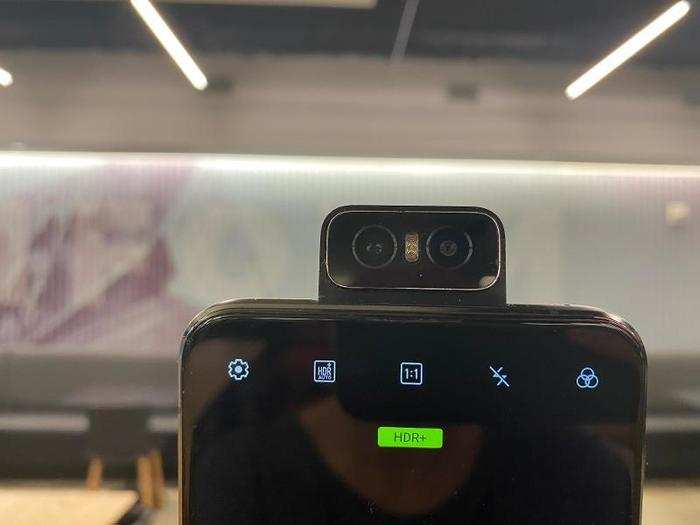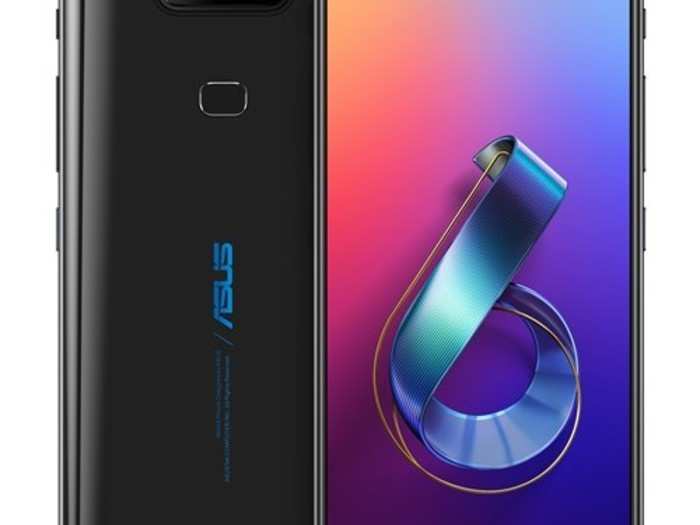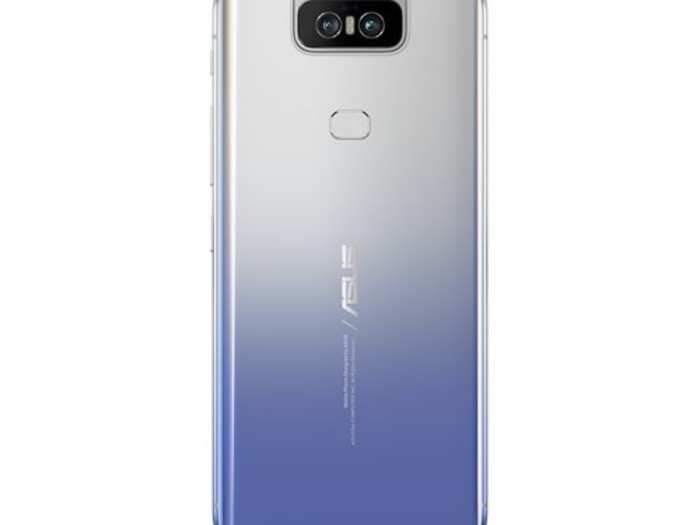- Home
- slideshows
- miscellaneous
- This little-known Android phone is one of the most exciting smartphones of 2019 - and it only costs $500
This little-known Android phone is one of the most exciting smartphones of 2019 - and it only costs $500
Screen quality and design

The camera

The biggest feature that sets the Asus Zenfone 6 apart from its rivals is its rotating camera, which juts out from the top of the phone and spins to face you when needed. When you're not taking selfies or using facial recognition to unlock the phone, the camera folds down and sits on the back of the device, similar to where the camera would be situated on any phone.
Asus isn't the first company to try this form factor; the $500 OnePlus 7 Pro also has a camera that pops out from the top of the device as necessary. But OnePlus only uses this system for the front-facing selfie camera, whereas the main camera is located in a fixed position on the back of the phone.
The Zenfone 6's camera system is comprised of two lenses: a 48-megapixel main camera, and a 13-megapixel ultra-wide angle camera. That latter addition has become a staple on flagship smartphones from companies like Apple and Samsung, enabling users to take photos with a significantly larger field of view to capture more of the scene. It's nice to see this feature make its way to more affordable smartphones, too.
The Zenfone 6's camera performs adequately and was able to capture crisp, colorful images both in daylight and indoors. But it wasn't quite as good as the camera on the much-pricier iPhone 11 Pro and similarly-priced OnePlus 7 Pro.
Although the Zenfone and OnePlus 7 Pro performed similarly when photographing flowers outside, Asus' phone fell behind both the iPhone 11 Pro and OnePlus 7 Pro when taking indoor portraits in mildly dim circumstances. The photo taken on Asus' smartphone was a little darker and less sharp than those taken by Apple's phone and OnePlus' device.
The Zenfone 6 does have one unique capability thanks to its flip camera. You can adjust the specific angle of the camera by sliding a button on the screen, making it possible to alter your shot by anywhere between zero and 180 degrees without have to actually move the entire frame. It's a feature that pushes the experience of taking photos on your smartphone forward in a meaningful way that makes the flip camera feel like more than a gimmick.
The Zenfone 6's rotating camera is certainly cool, but it's also worth noting that it's unclear precisely how durable the mechanism is. I've only been using the Zenfone 6 for a couple of days, but I'm wondering how well it will hold up after years of use. The phone can also sense if you drop it and retract the camera accordingly if it's in use, but I've found this feature to respind a bit slowly in my experience.
Other features and battery life

When it comes to unlocking your phone, Asus gives you two options beyond the more traditional PIN, passcode, or pattern: facial recognition and fingerprint scanning. Those two biometric methods of authentication have been table stakes for years, but as facial recognition has become more popular, some smartphone makers like Apple have abandoned the fingerprint reader altogether.
It's nice to see Asus give users some choice in terms of how they want to unlock their device, especially since the facial recognition can feel slower compared to other devices. That's because you have to wait for the camera to pop up before it can recognize you, which results in a slight delay.
The camera can also be a bit noisy when it emerges from the back of the phone, which isn't a much of a hindrance when taking photos. But it became an annoyance once I started to hear it every time I unlocked my phone using facial recognition. It only took about half a day with the Zenfone 6 to opt for the fingerprint scanner instead.
Authentication isn't the only area in which Asus gives you more choice than other smartphone brands. The Zenfone 6 is one of the only modern smartphones that still has a headphone jack, meaning you won't have to use a dongle if you have a favorite pair of wired headphones.
I couldn't accurately test the Zenfone 6's battery life since the model I tested wasn't compatible with my SIM card, which made it difficult to use the Zenfone precisely the same way I'd normally use my personal phone. But based on what I've experienced when using the phone through Wi-Fi, it seems promising. I still had more than 80% of my battery left after using the phone sporadically throughout the work day for checking email, sending messages, browsing the web, and streaming video.
The sheer size of the battery alone should provide some assurance that it'll last for a long time on a single charge. The Zenfone 6 has a 5,000 mAh battery, which is noticeably large for a smartphone. For context, the Galaxy S10 5G has a 4,500 mAh battery, while the standard Galaxy S10 has a 3,400 mAh battery and the OnePlus 7 Pro has a 4,000 mAh battery.
Should you buy it?

At a time when smartphones have become increasingly expensive and only offer moderate improvements over their predecessors, it's refreshing to see companies like Asus try something different —especially at such an affordable price.
The Asus Zenfone 6's impressive screen, notch-free design, decent camera with flexible shooting angles, massive battery, and low price make it a compelling choice for Android devotees on a budget. But as cool as the camera is, you'll have to be willing to cope with its downsides too — such as the little noise it makes each time it flips out, and the uncertainty around how long it will hold up after extended usage.
Popular Right Now
Popular Keywords
Advertisement